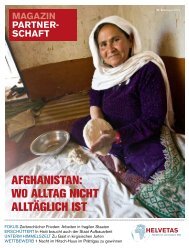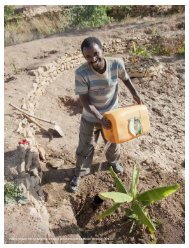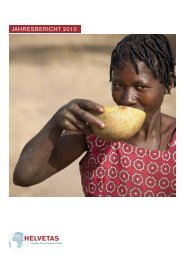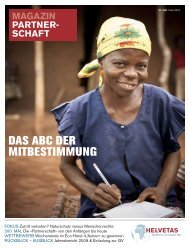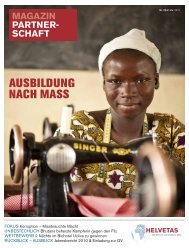Report Feasibility study organic bitter tea Cao Bang - Helvetas
Report Feasibility study organic bitter tea Cao Bang - Helvetas
Report Feasibility study organic bitter tea Cao Bang - Helvetas
Create successful ePaper yourself
Turn your PDF publications into a flip-book with our unique Google optimized e-Paper software.
<strong>Feasibility</strong> Study Organic Bitter Tea in <strong>Cao</strong> <strong>Bang</strong>: 2007<br />
5. ORGANIC PRODUCTION AND MARKETING REQUIREMENTS<br />
One of the observations of the survey was that the BTC has a limited understanding of the<br />
requirements and standards related to food safety in overseas markets, including <strong>organic</strong><br />
production. The reason for this survey was an apparent interest from a Korean buyer in<br />
<strong>organic</strong> <strong>bitter</strong> <strong>tea</strong>. However, during our interview with the BTC management it became<br />
clear that this was merely an interest in "clean" production, not in <strong>organic</strong>. This confusion<br />
was caused because the BTC management was of the impression that "clean" production<br />
(which is production with limited use of chemicals) was similar to <strong>organic</strong> production.<br />
Therefore, before going into more detail on the requirements for <strong>organic</strong> production, some<br />
more general information will be given on international for food safety regulations;<br />
5.1. What regulations to follow when exporting?<br />
When exporting agricultural products, either as raw material or processed, to another<br />
country the exporter has to be aware of two main areas where the importing country will<br />
have regulations for the exporter to follow. The first are food safety regulations and the<br />
second requirements on product traceability (FAO, 2007). For the main markets,<br />
European Union, Japan and Korea, which are considered for this report these regulations<br />
are compulsory and have to be followed by exporters or producers who want to sell their<br />
products into these markets. These are the basic regulations to follow for any product to be<br />
exported.<br />
On top of these compulsory standards, additional requirements will apply when the<br />
exporter wants to sell the product under a specific label required in the importing country,<br />
such as <strong>organic</strong> or "low pesticide". These standards are usually called voluntary standards<br />
since they only need to be followed in case an exporter wants to sell under that specific<br />
label (FAO, 2007). Voluntary standards are normally specific for a country. For example,<br />
Korea has a label for "low pesticide" products but a similar label does not exist in the EU<br />
nor are there any international "low pesticide" standards. Also, there is no system for<br />
recognition between "low pesticide" standards of different countries that have such<br />
standards, for example between Vietnam's "safe" vegetables standards and the Korean "low<br />
pesticides" standards. On the other hand, Korea, Japan and the EU have standards for<br />
<strong>organic</strong> products but these are not the same for the three countries. However, there exist<br />
some system for mutual recognition of <strong>organic</strong> certificates between the different countries.<br />
5.1.1. Food Safety Regulations<br />
Producers need to ensure the quality and safety of their produce and avoid all potential<br />
hazards such as risks from contaminated water or from other microbial or chemical<br />
contaminants. Regulations on the maximum residue limits (MRLs) of pesticides an<br />
herbicides are effective both at national and international levels. Producers and exporters<br />
must comply with both the regulations of their own country (in this case Vietnam) and the<br />
regulations of importing countries. They may only use chemicals that are registered for use<br />
on a particular crop and must strictly follow the directions indicated in the instructions<br />
leaflet or on their containers (boxes and bottles) (FAO, 2007).<br />
In the European Union, there are now common limits for many pesticides that apply to the<br />
entire European Union. However, for some pesticides the residue limits vary from country<br />
to country. Each country verifies that regulations are met (usually through the Ministry of<br />
Agriculture) at its point of entry. When European Union countries have not set up<br />
- 16 -




